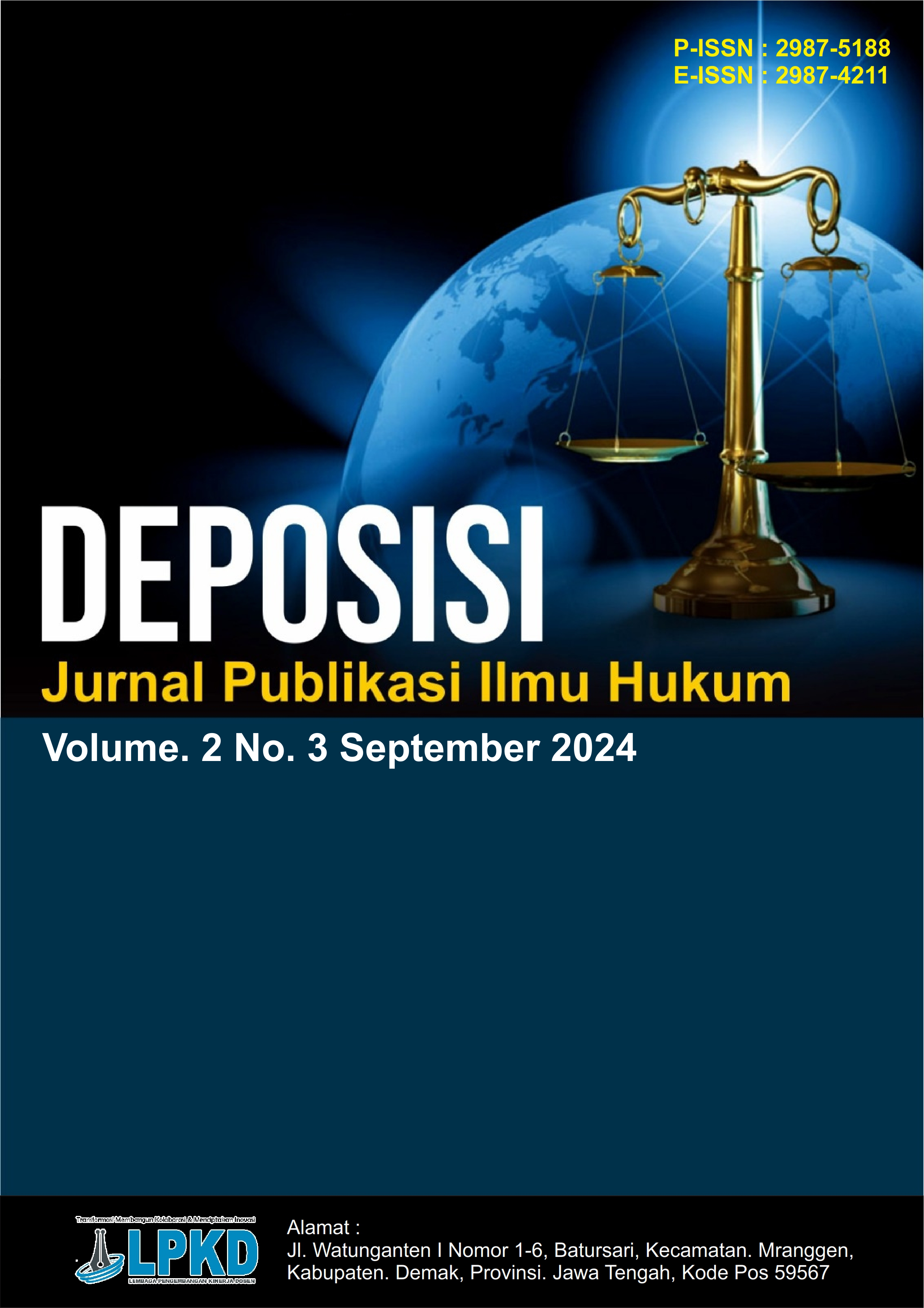Penyelesain Sengketa Tindak Pidana Kekerasan dalam Rumah Tangga di Desa Taman Sampang
DOI:
https://doi.org/10.59581/deposisi.v2i4.4187Keywords:
disput resolution, criminal act, domestic violenceAbstract
This study aims to analyze the settlement of domestic violence disputes (KDRT) in Taman Village with a non-litigation approach and the role of the village government in the process. The research method used is a qualitative method with a descriptive approach. Data collection was carried out through in-depth interviews, observations, and documentation studies related to the handling of domestic violence cases in the region. The main issues discussed are how the mechanism for resolving domestic violence through non-litigation channels and the active role of the village government in supporting victims and perpetrators to achieve conflict resolution without involving formal legal channels. The results show that non-litigation approaches, such as mediation and counseling, are an effective alternative in handling domestic violence cases at the village level. The Taman Village Government plays an important role in facilitating communication between the parties involved and providing psychological and social support for victims. In addition, the involvement of the village government in resolving domestic violence cases shows proactive efforts in creating a safer and more harmonious environment for the community. It is hoped that this approach can be a model for other regions in resolving domestic violence cases quickly and effectively without having to go through a court process that tends to take a long time.
References
Agus Mahendra Iswara, & Arya Agung Iswara. (2023). Penyelesaian perkara tindak pidana kekerasan dalam rumah tangga (KDRT) melalui mekanisme mediasi penal. Indramayu: CV. Adanu Abimata.
Joko, S. (2021). Kekerasan dalam rumah tangga. Jakarta: PT. Bumi Aksara.
Undang-Undang No. 23 Tahun 2004 tentang Penghapusan Kekerasan Dalam Rumah Tangga.
Undang-Undang Nomor 6 Tahun 2014 tentang Desa.
Undang-Undang Nomor 1 Tahun 1946 tentang Peraturan Hukum Pidana.
Undang-Undang No. 27 Tahun 1999 tentang Perubahan Kitab Undang-Undang Hukum Pidana.
Pravita Windi Anatasa Nitria. (2024). Toxic relationship maintenance dalam pernikahan untuk mencegah KDRT: Perspektif Mark Manson dan Mu’asyarah bil Ma’ruf. Journal Hukum Islam Nusantara, 07, 2–5.
Yuliati Hotifah. (2011). Dinamika psikologis perempuan korban kekerasan dalam rumah tangga. Jurnal Personifikasi, 2(1), 74–85.
Meoerti Hadiati. (2001). Kekerasan dalam rumah tangga dalam perspektif hukum pidana. Vol VI(2), 84–95.
Braithwaite, J. (2002). Restorative justice & responsive regulation. New York: Oxford University Press.
Durkheim, E. (1933). The division of labor in society. New York: Free Press.
Ediwarman. (2015). Restorative justice dalam penyelesaian tindak pidana kekerasan dalam rumah tangga. Jurnal Hukum, 3(1), 45–56.
Friedman, L. M. (1975). The legal system: A social science perspective. New York: Russell Sage Foundation.
Hikmah, N. (2017). Penerapan hukum dalam penyelesaian kasus kekerasan dalam rumah tangga di pedesaan. Jurnal Hukum & Masyarakat, 4(2), 77–89.
Nurhasanah, R. (2020). Peran aparat desa dalam penegakan hukum di daerah pedesaan. Jurnal Ilmu Hukum, 5(3), 92–102.
Soekanto, S. (2006). Sosiologi: Suatu pengantar. Jakarta: Raja Grafindo Persada.
Susanti, M. (2019). Hak-hak korban dalam penyelesaian kasus KDRT berbasis kearifan lokal. Jurnal Sosial dan Budaya, 6(1), 15–28.
Komnas Perempuan. (2022). Angka kekerasan terhadap perempuan dan anak di Sampang relatif turun. CATAHU 2020 Komnas Perempuan: Lembar Fakta dan Poin Kunci (5 Maret 2021). Retrieved February 6, 2021, from https://komnasperempuan.go.id/siaran-pers-detail/catahu-2020-komnas-perempuan-lembarfakta-dan-poin-kunci-5-maret-2021.
Downloads
Published
How to Cite
Issue
Section
License
Copyright (c) 2024 Deposisi: Jurnal Publikasi Ilmu Hukum

This work is licensed under a Creative Commons Attribution-ShareAlike 4.0 International License.














